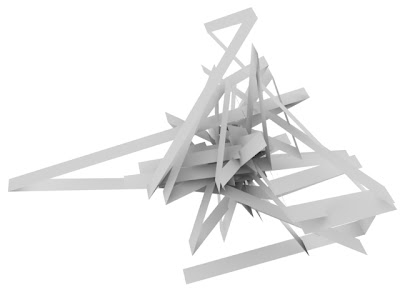Space_Sound is a study on the work of composer and architect Iannis Xenakis. The study took the form of an interactive web site (which can be seen here. However there are still some problems with the page so it might not display correctly).


Xenakis’ musical scores are composed in such a way that they have an underlying spatial dimension. His scores and diagrams for his compositions share very little resemblance to conventional musical sheets, while they could be undoubtedly “read” as spatial diagrams and architectural blueprints.
Xenakis was one of the first researchers to use computers in his musical/mathematical explorations. With a delay of some decades, the use of the computer in composition reached also the field of architecture and eventually led to a more constant, or more obvious, impact of mathematics to architecture. The architectural avant guard today has to deal with, up to a certain extent, with mathematical or computational processes like cellular automata, L-systems, stochastic process and boolean algebra, all methods employed earlier by Xenakis in his work.
Having the above in mind, Xenakis’ work could prove itself extremely helpful in relation to the questions that computation is posing to architecture today. More specifically, Xenakis’ work could provide insights for architectural practice in relation to the computers in two ways:
a. First in a theoretical level. Xenakis provides a very extensive philosophical and theoretical background for his work through his writings, which seems possible to be used also in relation to architecture today.
b. Secondly in a design oriented level. Iannis Xenakis started to use mathematics and computers as his tools for composition in the beginning of the 1960’s and continued this research until the end of his life. Therefore his work has to offer a great variety of methods, techniques and processes for the musical composition. Given the fact that Iannis Xenakis’ way of working with music was based on ‘spatial’ techniques and visualization of his ideas through drawing, a study of his projects could offer precious insight for architectural design. In addition to that, the introduction of those spatial qualities in Xenakis’ research that focuses on sound, arises questions on the relation between space and sound and how the one discipline can offer resources to the other.
So, space_sound consists mainly of visual representations of several methods that Xenakis employed in his work. Through scripting concepts and mathematical ideas like boolean algebra, alleatory distribution of points on a plane, brownian motion, cellular automata etc. are used in order to create small animations that are trying to explore the spatial or architectural qualities that those concepts can activate.
Some direct links to the animations:





